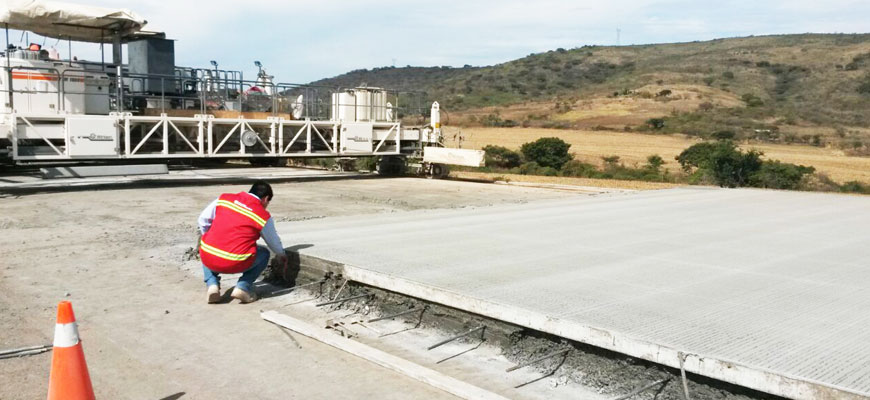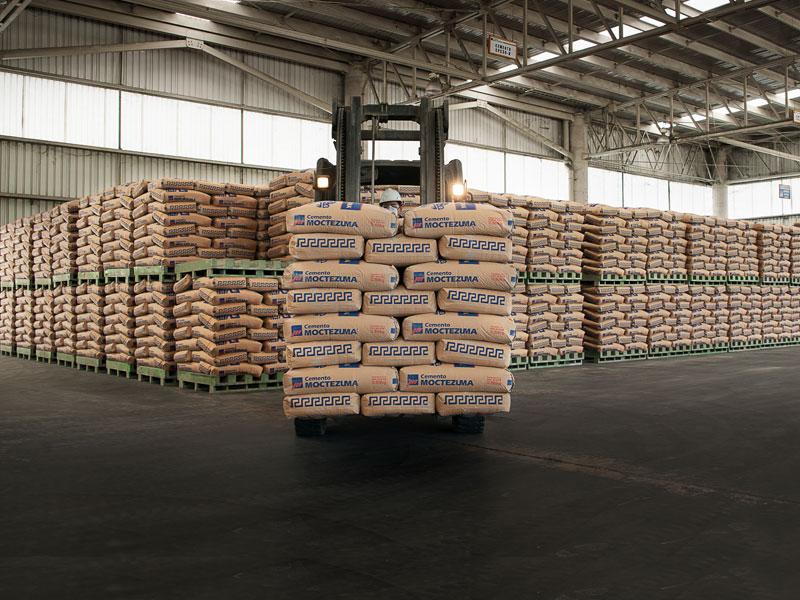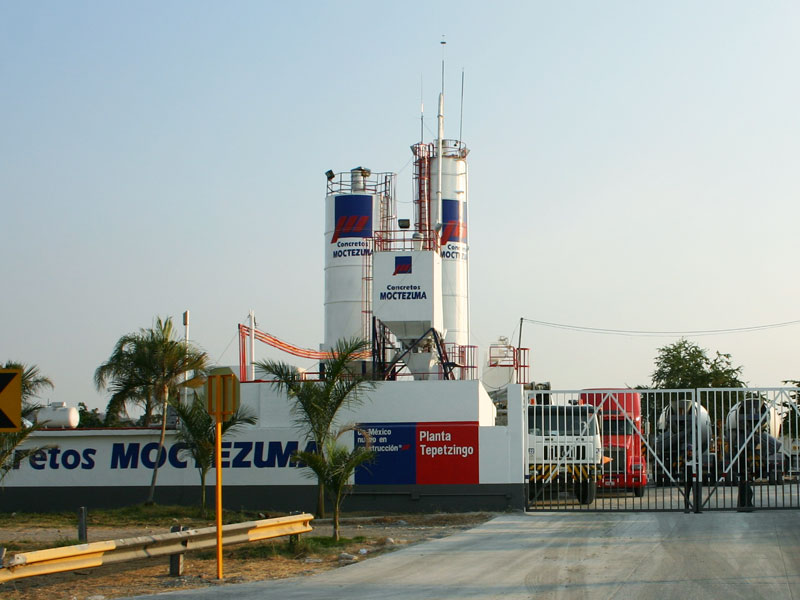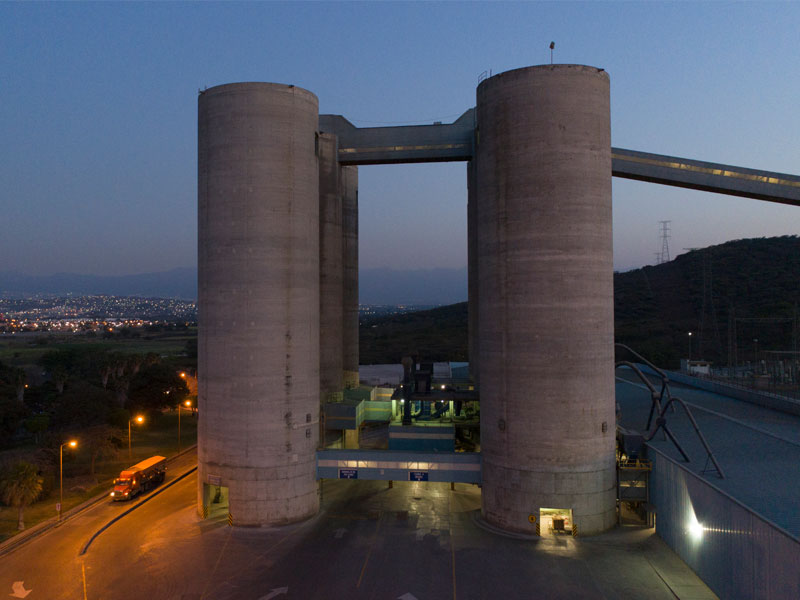

From ancient times, Humanity has planned and built its roads and land routes to exchange products, cover basic needs, have access to their sites of interest and worship sites, or just for the simple sake of exploring new horizons, searching for the possibility of getting to further destinations. The purpose is to transport with less physical effort and make more efficient and lasting the new or existing land routes.
History provides evidence of large-scale challenges in which engineering, along with the concrete technology have overcome great challenges with excellent results, without compromising the quality of works, respecting the harmony of the environment and without squandering money and execution time.
A classic example is the first way made with hydraulic concrete in Bellefontaine, Ohio, United States, built in 1981 and still in service.
Theoretical rationale
Hydraulic concrete pavement is a simple or complex structure with a regularly smooth surface, and intended for the circulation of people, animals or vehicles.
Its structure us a combination of a solid foundation and a coating, casted over a foundation ground resistant to loads, climate agents, and abrasion caused by traffic, The mixed of hydraulic concrete for pavements must be designed for:
- Grant a satisfactory durability within the pavement requirements
- Ensure the desired bending strength
The bending of hydraulic concrete pavements, under loads applied by tires, combines compression and tension stresses. Compression stresses are low regarding the slabs’ strength, and without major effect in the width.
Hence, the hydraulic concrete used in pavements is specified for its bending strength, measured by a Modulus of Bending Rupture (MR), at 28 days, expressed in kg/cm² (MPa) and generally varies between 40 and 50.
Besides supporting the normal and tangential stresses given by the tires and its well-constructed structural constitution (high flexural and fatigue strength, and high elastic modulus), it must have enough thickness to allow the introduction of weak depressions at ground level of the foundation ground in the most unfavorable cases; and every suitable structural level to stand the stresses to which it is subject.
It must comply with the main characteristics of hydraulic concrete pavement: intended for a long service period, and demand low maintenance. The main factors that influence the performance of pavements are:
- Traffic
- Climate
- Project's geometry (road design)
- Structure position
- Building and maintenance: remember that the structures do not behave the way they are designed, what is important is how they are built.
Among the design variables that must be considered for the design and building of a concrete pavement are the following:
- Foundation ground - foundations
- Concrete quality
- Traffic analysis - classification of the road
- Geometrical design
- Structural design - typical solutions
- Joints
- Technical specifications
PCA Method
This method is based on two specific criteria: one regarding the concrete's fatigue resistance and the other regarding the base's erosion. In the first case, the maximum load is assumed to be applied in the middle of the slab just over the longitudinal joint that will give the maximum stress to the slab.
In the second case, the maximum load is assumed to be applied in the corner of the slab to generate maximum deflection over it. When this design method id used, four main parameters must be considered:
- Concrete's modulus of breaking
- Modulus of subgrade reaction of the foundations
- Design period
- Traffic characteristics
AASHTO Method
This design method applies an empirical equation developed through studies and essays of concrete pavements by the American Association of State Highway and Transportation Officials (AASHTO). The design criteria are:
- Number of axial loads equivalent to 80kN
- Slab thickness
- Concrete elastic modulus
- Concrete modulus of rupture
- Modulus of subgrade reaction of the foundations
- Load transfer coefficient in joints
- Drainage coefficient
Irrespectively to the design method chosen, citizens request safer roads, with more visibility, without deformations, with good drainage and better driving and braking conditions, comfortable, cheap, and, most of all, environment friendly.
On the other hand, public administrations need long lasting, functional, high resistance roads with a longer useful life and that require less maintenance.
Regarding expenses, the aspects that make up the life cycle of a pavement or road that have to be considered are:
- Initial building expenses (total cost of the project at the time of its opening)
- Preservation or maintenance expenses (repairs, refurbishments, extensions, updates)
- User expenses (vehicle operation, tires and gas consumption, travel time, and accidents)
Use of spreader machines
A practical, functional, quick and efficient way, used for building highways, roads, or pavements with hydraulic concrete, is using spreader machines, which provide high performance and reduce the building times, particularly in vast lengths.
Besides allowing and making the placement of concrete quicker, these machines have a working platform that makes easier the installation or insertion of dovels in the joints, stripping the surface and spraying the curing membrane.
The great results obtained with these equipment are recorded in several reference works, and the cases studied have been used to increase the building experience.
During the last decades, countless road projects have been made in Mexico with this technique, among which we can mention some main highways: Querétaro – Palmillas, Ciudad de México – Querétaro (sections), Zapotlanejo - Guadalajara, Huisache – Matehuala, Cancún – Playa del Carmen, besides the Arco Norte project.
Case study
Currently, a work with a particular importance in the state of Jalisco is being executed, the Southern Beltway of Guadalajara. It is a hydraulic pavement road of 111 km long, with four lanes (two per direction), which will help avoid the metropolitan area of Guadalajara to give continuity to the long routes transit which crosses the Central and Northeast part of the country through the highway corridor Mexico-Nogales.
The investment is 415 million dollars. Once opened, a daily average of approximately 12,500 vehicles will circulate, and it will avoid 8,000 freight vehicles entering to the city of Guadalajara. This will considerably reduce the polluting emissions within the urban center of the second most important city in Mexico.
Our Concretos Moctezuma® division made up over 35 years ago, represented in over 10 stated of Mexico, takes part on the main infrastructure, building and industrial park works; and we are devoted to produce and provide the construction market with the best ready-mix concrete, exceeding the Mexican Official Standards, and the international quality standards, using cement with the highest quality and most advanced technology in the market: Cemento Moctezuma®.
At Concretos Moctezuma® we have the contract for the supply of concrete destined for structural and complementary elements of the beltway.
“CYM Infraestructura”, company made up at 50% between Concretos Moctezuma® (Latinoamericana de Concretos, S.A. de C.V.) and COMSA EMTE (COMSA EMTE MEX, S.A. de C.V.), is focused in carrying out manufacture and placement works on pavements of great highway or airport projects, it is the company that has the contract for placing 805,000 m³ of concrete for the pavement of this speedway.
COMSA EMTE is one of the main construction companies in Spain, based in Mexico some years ago, and renowned internationally for great pavement and railroad works. Some of the most important aspects of the project are the following:
Description
The Guadalajara project consists in building an A4 motorway (four lanes) starting in the Zapotlanejo junction of the Zapotlanejo – Guadalajara motorway and ending in the Arenal junction of the Guadalajara – Tepic motorway.
It is made up of a 33 cm thick hydraulic concrete pavement and a bending strength of 48 kg/cm². In total, 805,000 m³ of hydraulic concrete will be supplied and placed with two 11m useful width spreaders and with an automatic steel beam insertion system (DBI).
The concrete us being manufactured in two central mixing plants which production capacity is 200 m³/h, with a mixing capacity of 9 m³ per load. The transportation of the mix is carried out with tipper trucks with 9 m³ per trip.
Concrete mix
Portland Cement with a resistance of 408 kg/cm² at 28 days, with crushed basaltic origin aggregates from the Gravase Santa Rosa bank in Jalisco is used for manufacturing the concrete with medium range water reductor plasticizer additive and a setting retarder.
Work progress
Its ending and opening are programmed for the year 2016.
Conclusion
In works like the Southern Beltway of Guadalajara, the concrete's technology us the interactive language between engineering and the communities, offering great results and competitive costs in civil works that are a legacy for future generations.
Bibliography
- American Association of State Highway and Transportation Officials, AASHTO.
Design Guide
- Portland Cement Association, PCA: Design Guide
- Cement and Concrete Mexican Institute, IMCYC: Concrete Pavements
Autores:
Ricardo Bravo V.
Juan Carlos Carcamo


